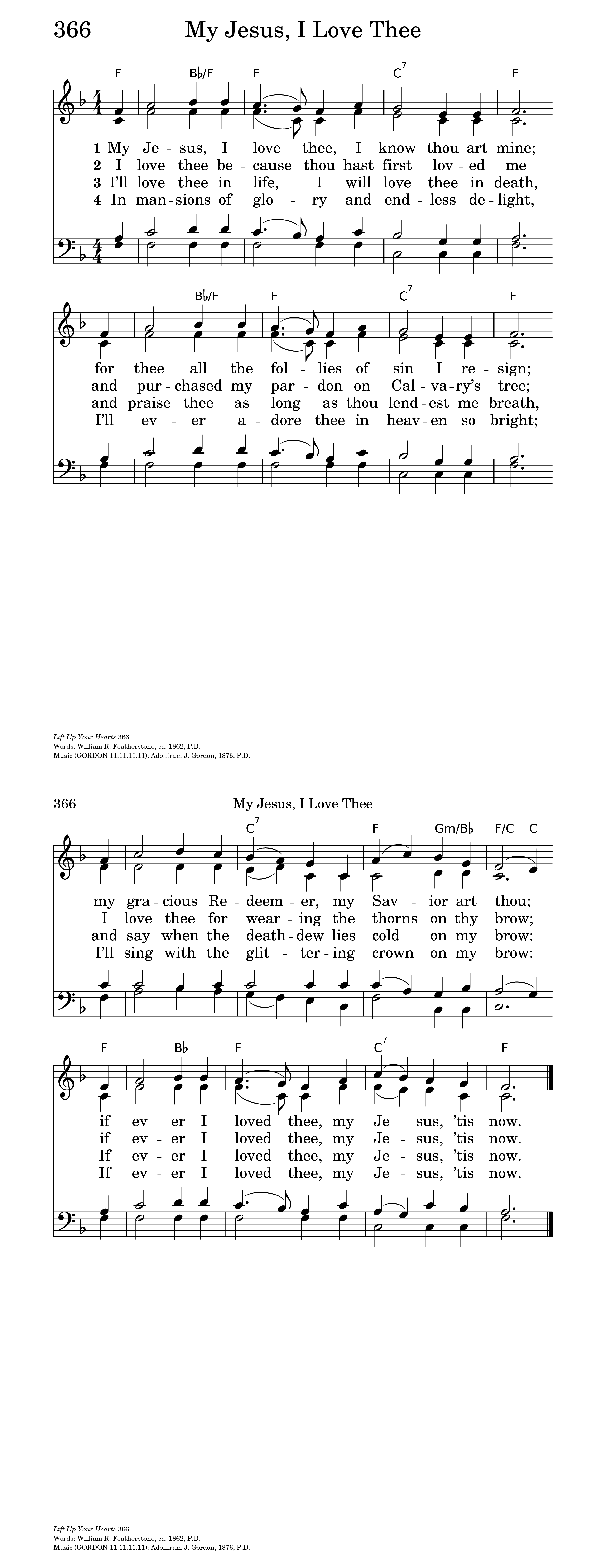for thee all the follies of sin I resign;
my gracious Redeemer, my Savior art thou;
if ever I loved thee, my Jesus, 'tis now.
2. I love thee because thou hast first loved me
and purchased my pardon on Calvary's tree;
I love thee for wearing the thorns on thy brow;
if ever I loved thee, my Jesus, 'tis now.
3 .I'll love thee in life, I will love thee in death,
and praise thee as long as thou lendest me breath,
and say when the deathdew lies cold on my brow:
If ever I loved thee, my Jesus, 'tis now.
4. In mansions of glory and endless delight,
I'll ever adore thee in heaven so bright;
I'll sing with the glittering crown on my brow:
If ever I loved thee, my Jesus, 'tis now.
The hymn "My Jesus, I Love Thee" was penned by William Ralph Featherston, a young teenager who, at around 16 years old, wrote this devotional poem in 1862 shortly after his conversion to Christianity. Born in Montreal, Canada, Featherston was a member of the Wesleyan Methodist Church. The poem, expressing deep love and devotion to Christ, was sent to his aunt in Los Angeles, who facilitated its publication. It first appeared anonymously in the London Hymn Book in 1864
Tragically, Featherston passed away at the age of 27, and little else is known about his life or other works. Years later, in 1876, Adoniram Judson Gordon, a Baptist minister and hymn composer, discovered the poem and was moved by its heartfelt expression. Dissatisfied with the existing melody, Gordon composed a new tune, now known as "Gordon," and published the hymn with this music in The Service of Song for Baptist Churches. This pairing of Featherston's words with Gordon's melody has since become a beloved standard in Christian hymnody.
The hymn's enduring popularity is a testament to its sincere expression of love and devotion to Jesus Christ, resonating deeply with believers across generations.



No comments:
Post a Comment